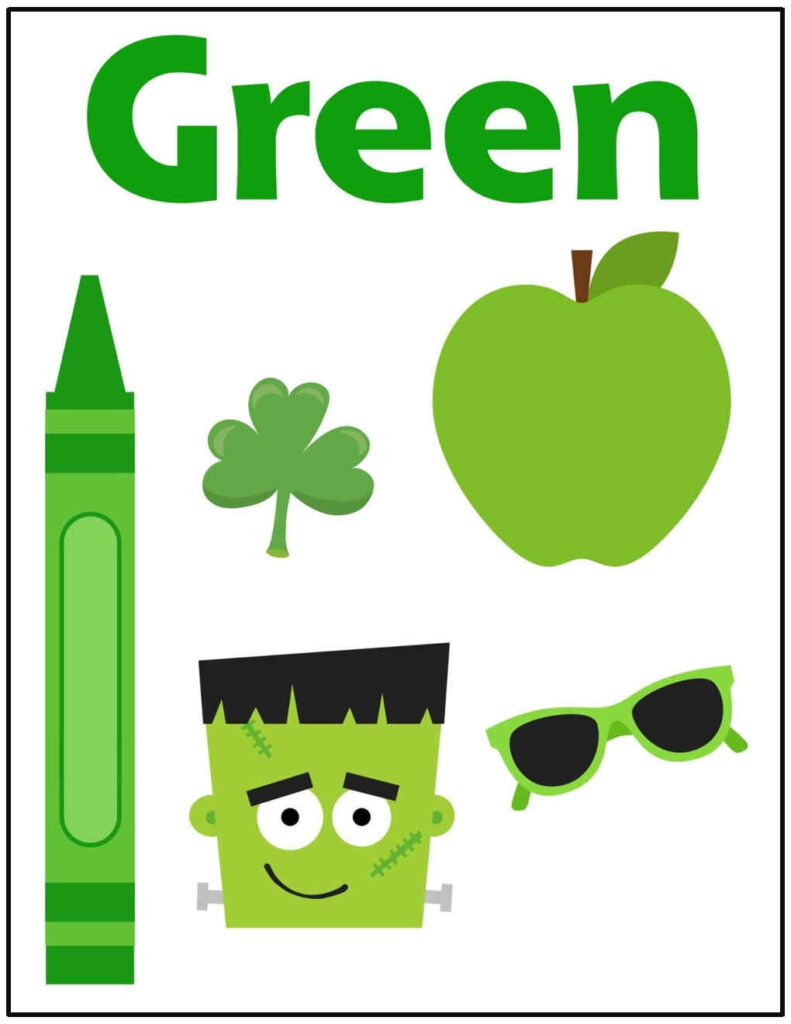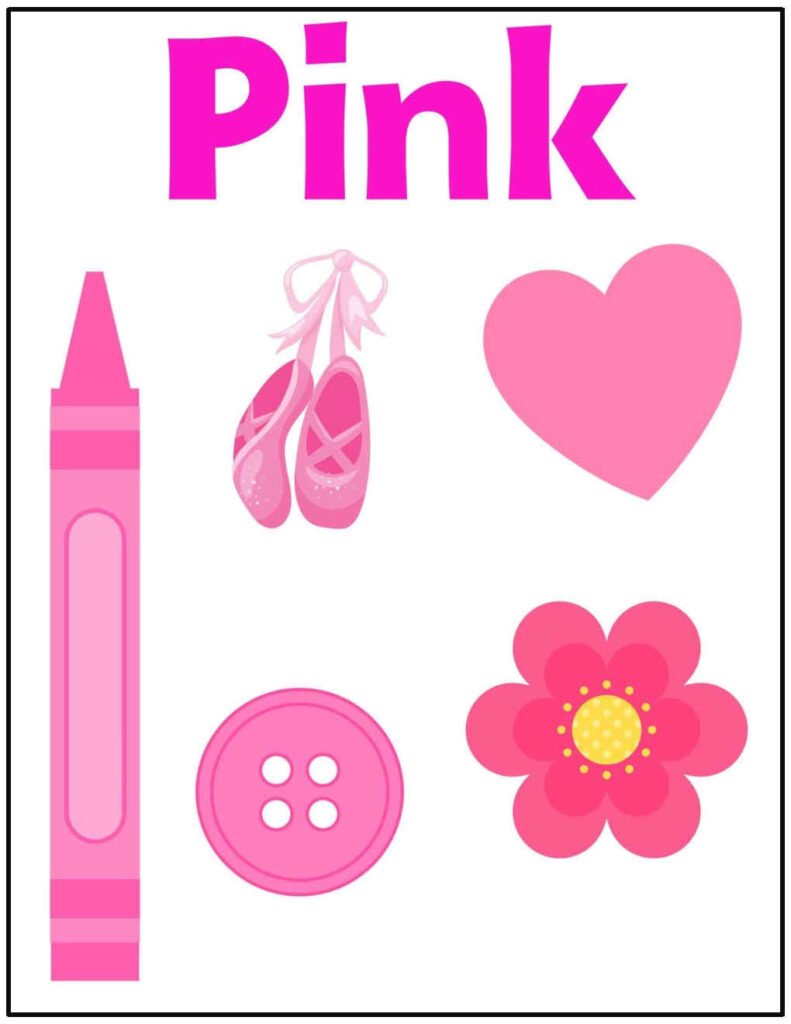
Colors may appear to be an evident part of our reality, but that’s only because we’ve grown accustomed to them. Learning how to name and recognize colors can be difficult for children, as we’ll see below. Early childhood is the ideal time to teach colors. As a result, we’ll go through how to teach colors to toddlers and preschoolers in this post.
Understand how a child’s mind works: color clashes with our natural thinking style.
Color naming is highly influenced by culture and language; for example, identifying shades of blue and how they differ from green is not something that comes naturally to humans. Over time, a group of people devised that because humans prefer to think in ‘categories’ because it’s simpler to communicate and make sense of the world that way.
As a result, color can be determined by the context we already have in our minds – as we witnessed with the “dress” phenomena that swept the Internet a few years ago.
Children who are discovering colors for the first time may struggle to understand the differences between pink and red, or that navy blue is not black. First and foremost, they must figure out what you’re talking about!

That makes a lot of sense. Children, on the other hand, are rational, literal thinkers by nature. It’s why they sometimes write letters backwards, because some of them are, in theory, the same (like p, q, b and d). It’s also why they use grammar patterns that may make sense to a fresh language learner but are incorrect to native language speakers. We believe they are conversing in a ‘cute’ manner, but they are only following logic.
It’s rational, for example, if your youngster says something is “broken” rather than “broken.” They’re attempting to adhere to a grammatical pattern. And English isn’t a rational language. Why would anything be “broken” if it can be “cracked” or “wrecked”?
When a child’s entire world is fresh to them, they will be absorbing information for the first time. It’s overwhelming, but thrilling, which is why the moon and grass, as well as colors, are so attractive to them.
They’ll have to undergo some ‘unlearning’ to understand our cultural language conventions and ‘categorical’ thinking (as the article linked-to above explains). They’ll have to figure out what colors their parents and teachers want them to name blue, blue, and green.
So don’t be concerned if your child doesn’t get his or her colors correct for a while. The most difficult ones can take until about the age of three to master. And, based on the naming systems we provide to them in our linguistic groups, they can learn different hues of colors around the age of five.

Keep it simple:
Given that color differences might be subjective, it goes without saying that when educating toddlers and preschoolers about colors, you should begin with the fundamentals. To put it another way, this age group should be taught primary colors first.
The primary colors are as follows:
Red
Yellow
Blue
After that, add secondary colors, which are created by mixing the primary colors (in painting, at least). They are as follows:
Orange
Green
Purple
It doesn’t matter if you start with secondary colors or primary colors at this point. The goal is to educate a toddler how to distinguish between ‘large’ color groupings.
After that, you can use pink, brown, black, grey, white, and other colors.
At start, concentrate on color recognition rather than pronunciation.
Some young youngsters will be able to just point to colors rather than express them. That’s still fantastic. It demonstrates that they comprehend this abstract notion and are learning to see colors in a variety of situations.

It goes without saying that some children will mispronounce color names. That’s OK. If you start overemphasizing that “bawn” is actually “brown” at this time, you can be confusing a young toddler. They might not have the muscle memory to speak things appropriately right now. But they understand what they’re saying.
It’s alright if you pronounce the colors correctly (and you should). However, if a one- or two-year-old says “bawn” and properly recognizes the color brown, you can congratulate them with a “yay!” That’s correct! “Way to go!” Don’t make them lose attention by saying, “No, brooowwn.”
This isn’t a lesson in pronunciation. It is color recognition. You can fix their pronunciation if necessary once they can distinguish and label colors without thinking about it. However, most children will naturally acquire up the correct pronunciation of all terms over time.
For the time being, just enjoy the “nanas,” “paasgettis,” and “naganets,” or bananas, spaghetti, and magnets. “Bawn,” “boo” (blue), “pik” (pink), “lallow” (yellow), “wed” (red), and “oooen” (orange) are all acceptable alternatives. They’re very cute!

To demonstrate color differences, use identical objects that come in different colors.
This can be done with balloons, flash cards, plastic cups, or anything else you can find that is easy and safe to hold for a youngster while still being comparable in form.
This aids a child in recognizing the feature that distinguishes an object. When you repeatedly tell them that “this cup is yellow,” “this cup is green,” and so on, they will ultimately notice the variations. They’ll also realize they’re a crucial component of the communication process.
Later, when you leave the house or go to daycare, you can point out’real world’ objects that are identical except for color. “I see a green car, do you see a red car?” for example. or “have a look at the blue and brown houses.”
You can start utilizing color more in language when the youngster learns to recognize it as an adjective. Even if equivalent options aren’t available, begin naming items with this adjective. “I see an orange pail and a yellow shovel!” for example. The brown sand and green grass are available for us to play in.”
As a memorizing challenge, play easy color recognition games.
Making mistakes and then trying again is an important part of learning. Games with tests can aid with color recognition because it is essentially memory. They make memorization enjoyable by challenging oneself to improve.

Of course, with small children, the challenge should be age-appropriate and straightforward. Give them a stack of 20 crayons but don’t expect them to name them all at once. That’s excessive.
Start with a few balloons, balls, or play cups instead. “Can you find the yellow one?” inquire. “Where is the red car?” or “What happened to the red car?” And so forth. When they get it right, you give them a compliment – a show of approval from you that serves as an emotional reward.
If they do it incorrect, don’t be disappointed — it will put them off. “Oh, I guess it’s actually THIS one!” just say. Is that what you meant when you said “red”?”
Play this type of game repeatedly. To identify the colors of items, use flashcards, books, or, as previously indicated, play it when you’re out of the house in’real life.’
You can also inquire about the color of their food or the color of their shirt on a daily basis. Ask about color all the time so they understand how important it is.

When they’re old enough (around preschool age), “I spy” is a great game to play to teach them about colors. “With my small eye, I detect something that is… white!” The other person is then required to search around the room for anything white that you can both see. They will continue to guess until they get it right. Then they’ve ‘won.’ It’s now their chance to snoop!
Allow youngsters to play with and construct with colors in order to learn about color applications and theory.
Children (and all people) learn best when they apply what they’ve learned. That is, through manipulating objects and incorporating activities, speech, and other actions into the learning process. The brain is more engaged as a result of this. It also aids in the formation of memories through association.
In other words, participation in activities that intentionally emphasize colors is a vital element of teaching preschoolers and toddlers about colors. To achieve this, you can use craft paper, crayons, paint mixing, and other materials.
Use colored sand or grains for tactile color learning. Allow them to touch various colored textiles. Make colorful face paint or handprints. With several colored ink pads, stamp creative shapes. Make their favorite color glitter slime and play dough. Make a ‘rainbow cake’ or use colored frosting to decorate cookies.

Now, as they are executing these activities, remind them of the colors they are utilizing by identifying them aloud and asking them to do the same.
Finally, teaching colors to infants and preschoolers is a gradual process.
As we’ve already mentioned, teaching toddlers and preschoolers about colors isn’t something that comes naturally to them. It’s something that needs to be taught and reinforced, mostly because color classifications are based on language and culture rather than a “black-and-white” science.
So, give kids a bit of patience with colour knowledge and recognition. And it’s up to you to be the one who remembers the names of colors and notices when there’s an opportunity to bring them up in discussion. The more these terms and labels are repeated, the more a kid will understand the importance of color distinctions.

Of course, even if it comes naturally, most kids eventually ‘get it.’ It’s not as if we’re all colorblind until we’ve been educated to recognize them. It’s more than our color classifications must be ‘decided upon,’ both collectively and socially. Otherwise, it’s difficult to tell where orange, red, and pink begin and end. As a result, for children, this is a necessary aspect of language development – being able to label something what we all understand it to be.
Color learning is made more enjoyable and practical by playing games. It aids in the retention of this knowledge in the brain. Not to mention that it allows you to spend quality time with your children.





GIPHY App Key not set. Please check settings